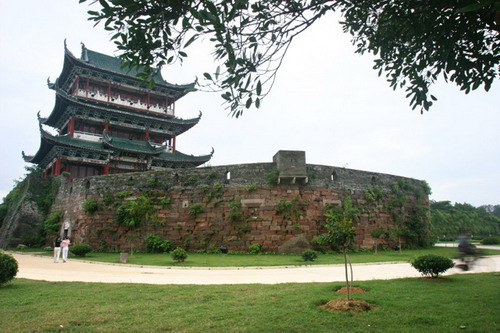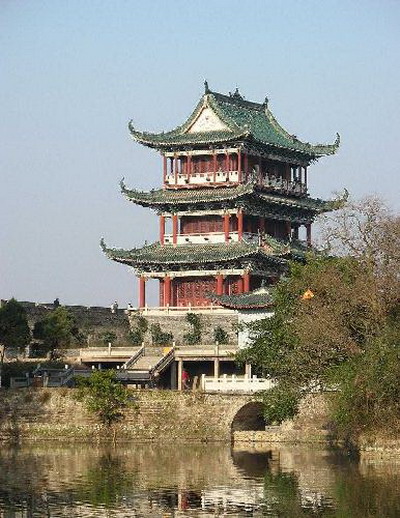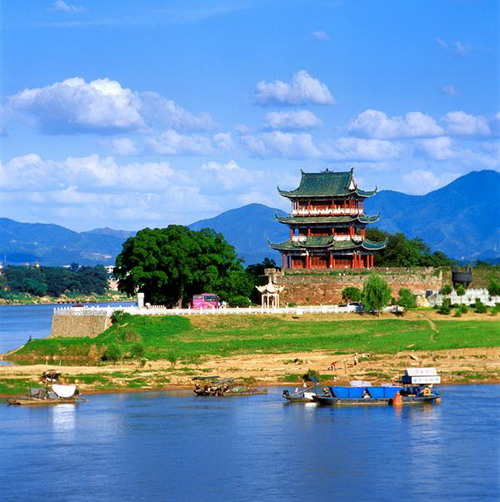Lofty Lushan Mountain
Temples in Hidden Places
On the First of August
Wheels by the Water
Share your travel story with regional@chinadaily.com.cn
Bajing (Eight Scenes) Pavilion
( jxwmw.cn )
Updated: 2011-09-13
 |
| Bajing Pavilion is?the symbol of the old Ganzhou city. |
Bajing (Eight Scenes) Pavilion, the symbol of the old Ganzhou city, lies at the confluence of the Zhang River and the Gong Ring in the north of Ganzhou city. The 285-meter and 3-story pavilion with features of magnificent upturned eaves, sets of brackets, carved beams and vermilion pillars, covers an area of 547 square meters.
According to the historical record, the original pavilion was built of rock by Kong Zonghan in the Jiayou Period (1056-1063) of the northern Song Dynasty. Kong Zonghan, from Qufu city of Shandong province, was the 46th generation great grandson of Confucius. Because the city, especially its northern part, was hit by flood every year, Kong decided to forge the basement with iron and build the wall with rock, replacing the past earth wall and building a pavilion on the wall.
 |
|
It's a?285-meter, 3-story pavilion with features of magnificent upturned eaves. |
After the pavilion was built, Kong created some paintings and invited Su Dongpo, the famous poet in Song Dynasty, to write poems for them. For the first time, Su put forth the idea of eight scenes to beautify a city, forming a group of unique scenic spots for tourists and later ages. This idea, after all, is a milestone of Chinese tourist culture.
Inside the Bajing Pavilion is the Ganzhou Museum with rich historical cultural relics. Around the pavilion is a fresh and quiet park where one may enjoy the picturesque flourishing green trees and plants, clear water ripples and murmuring springs, ancient buildings and kiosks facing each other.
 |
|
Around the pavilion is a fresh and quiet crook with crystal clear water. |




